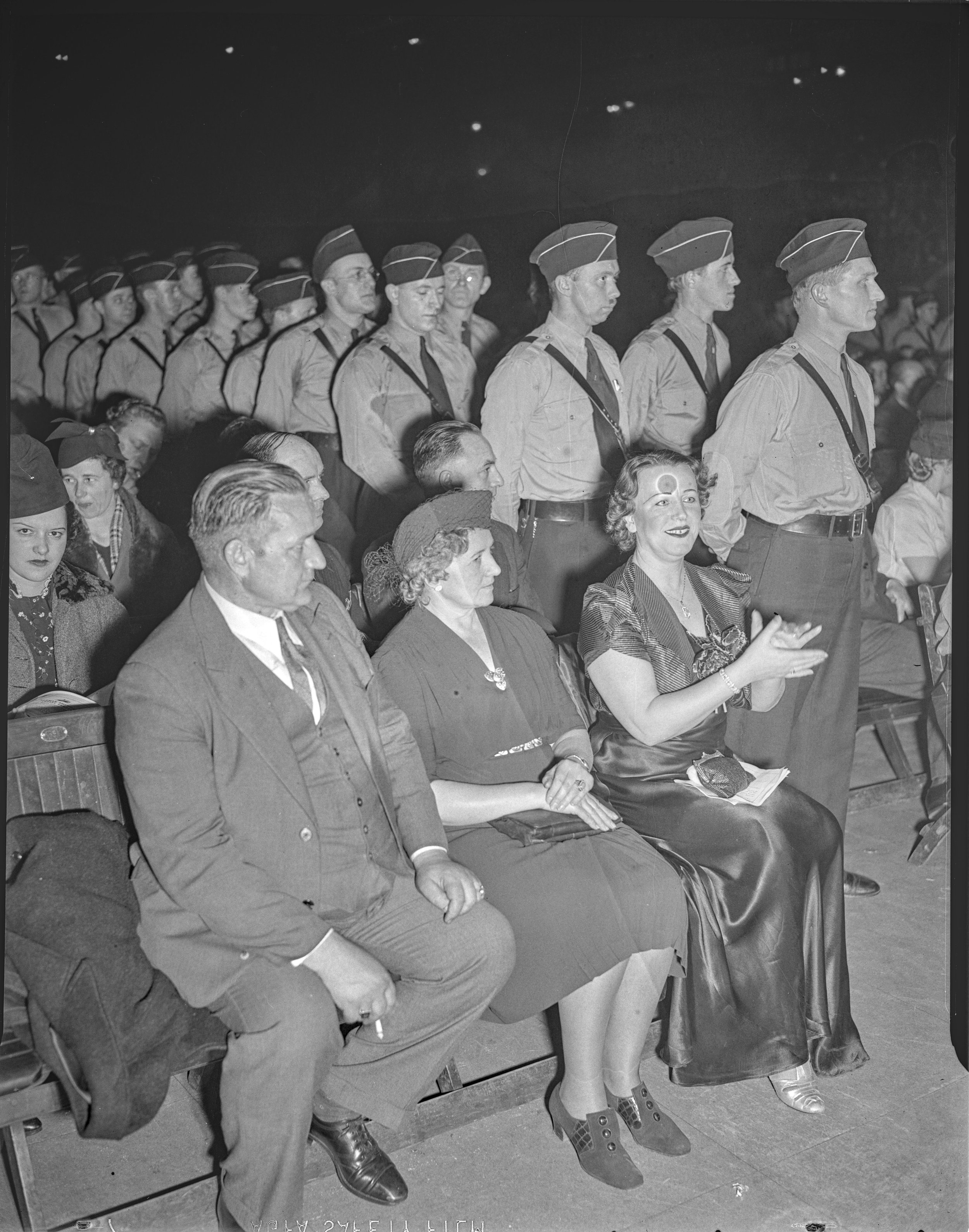New Yorkers went to the polls on election day, November 7, 1989, and elected David N. Dinkins as the City’s first black Mayor. Inaugurated on January 1, 1990, Dinkins served one term, through December 31, 1993.
Photographer: Joan Vitale Strong, Mayor David Dinkins Photograph Collection, NYC Municipal Archives.
Collections of mayoral photographs in the Municipal Archives date to the administration of Fiorello LaGuardia. This week’s blog is a picture essay, highlighting images from the Dinkins mayoralty.
Mayor Dinkins’ staff included photographers who documented his daily activities and the surrounding environment. The pictures begin with the January 1, 1990 inauguration ceremony and continue through his next-to-last-day in office, on December 30, 1993, when he held an Open House at City Hall.
As required by the City Charter, the Municipal Archives accessioned the collection of prints and negatives, along with the paper records in 1994. They constitute approximately 35,000 images, and total 70 cubic feet.
Although the activities of earlier mayors were documented by city photographers, the practice of employing full-time dedicated photographers to document mayoral activities began with the administration of Mayor Koch in 1977. Koch’s photograph collection is also maintained in the Municipal Archives.
Mayor Dinkins’ photographers, Joan Vitale Strong, Diane Bondereff, and Ed Reed continued the same system as devised by Mayor Koch’s chief photographer, Holly Wemple. The process began with a request from a mayoral staffer, usually a person in the press office, submitting a form to the “Mayor’s Photo Unit.” The form specified the name, date, time, and place of the event as well as the intended use of the photographs, i.e. publication, or “personal.”
The photographers used 35mm SLR cameras. Although the bulk of the pictures were shot on black and white film, some of the more important events, such as the reception and ticker-tape parade for South African leader Nelson Mandela, were also documented in color.
The photographs taken at each event are filed in individual folders labeled with the date and subject. The folders contain negatives of the pictures, cut into strips, stored in archival sleeves; contact sheets; and often, prints of selected images in a variety of sizes. The photographers generally chose one or two of the best shots—usually the most flattering of the Mayor—to be printed and distributed to newspapers and/or other persons who appear in the pictures.
The folders also contain other useful information and related paperwork such as press releases, memos with further details about the event, background information, and the names of media outlets where prints were sent for publication.
The bulk of the pictures in the collection document “meet-and-greet" events and press conferences at City Hall and Gracie Mansion. The photographers also accompanied the Mayor on visits and appearances he made throughout the city.
Mayor Dinkins was visiting Japan when the first bombing took place at the World Trade Center on February 26, 1993. He toured the site on March 1, and three weeks later he invited students from P.S. 91 to visit with him in City Hall. The class, one of several public school groups visiting the World Trade Center during the February 26th bomb blast, was stuck in an elevator for nearly six hours.
Mayor David Dinkins and First Deputy Mayor Norman Steisel tour the site of the World Trade Center explosion, March 1, 1993. Photographer: Diane Bondareff. Mayor David Dinkins Photograph Collection, NYC Municipal Archives.
Mayor David Dinkins speaks with a class from P.S. 91, City Hall, March 24, 1993. Photographer: Joan Vitale Strong. Mayor David Dinkins Photograph Collection, NYC Municipal Archives.
A tennis enthusiast, Mayor Dinkins negotiated an agreement with the United States Tennis Association that kept the U.S. Open Tennis Tournament at Flushing-Meadows. Mayor David N. Dinkins with John McEnroe (left) and Arthur Ashe (right), at the U.S. National Tennis Center, Queens, April 22, 1992. Photographer: Joan Vitale Strong. Mayor David Dinkins Photograph Collection, NYC Municipal Archives.
Mayor Dinkins’ establishment of the “Safe Streets, Safe City,” program was one of the highlights of his administration. Mayor Dinkins receives a gift from Loisaida Inc. at a visit to a youth center expanded with funding from the new program, Lower Eastside Action Program, December 6, 1990. Photographer: Joan Vitale Strong, Mayor David Dinkins Photograph Collection, NYC Municipal Archives.
Mayor David N. Dinkins celebrates the “Earth’s Birthday Party” with Carly Simon and a party of pre-schoolers who each released a butterfly that they had raised from caterpillars. April 20, 1990. Photographer: Joan Vitale Strong, Mayor David Dinkins Photograph Collection, NYC Municipal Archives.
Mayor Dinkins announces accessible bus and transit options with Anne Emerman, Commissioner of the Office for People with Disabilities, at the 125th Street subway station, June 29, 1990. Photographer: Joan Vitale Strong, Mayor David Dinkins Photograph Collection, NYC Municipal Archives.
Mayor Dinkins pays a courtesy call with Dalai Lama of Tibet, the Regent Hotel, September 11, 1990. Photographer: Joan Vitale Strong, Mayor David Dinkins Photograph Collection, NYC Municipal Archives.
Mayor Dinkins jams with Paul Simon at a press conference announcing free summer concerts, City Hall, July 28, 1991. Photographer: Joan Vitale Strong, Mayor David Dinkins Photograph Collection, NYC Municipal Archives.
Mayor Dinkins meets with graduates of the Volunteers of American Sidewalk Santa “school,” City Hall, December 24, 1990. Photographer: Joan Vitale Strong, Mayor David Dinkins Photograph Collection, NYC Municipal Archives.
Mayor Dinkins helps serve Christmas dinner to members of the Grand Central Partnership Multi-Service Center, a drop-in site for the homeless, Grand Central Terminal, December 24, 1991. Photographer: Ed Reed, Mayor David Dinkins Photograph Collection, NYC Municipal Archives.

















